Church Projectors
Choosing the right projector for houses of worship.
What projector resolution is best for church use?
Can my church projector be wireless?
How far away does a church projector need to be placed?
What projectors do you recommend for church use?

Data projector brightness is generally measured in ANSI Lumens or ISO Lumens. These lumens measurements make it easier to compare the different projector models and work out what would be better suited for your venue.
Most houses of worship, such as Churches, Mosques, Synagogues, and Temples can have high levels of light, including daylight. To ensure your image remains vibrant, even in high levels of ambient brightness, we recommend projectors with 5000 ANSI Lumens or more. It may be possible to use a projector with less power however a room with less ambient light, or a smaller image size, would be required.
Large houses or worship may require a more specialised large-venue projector. These models tend to feature brightness levels starting at 6000 lumens and can go up well over 10,000 lumens. This more specialised projector range may come with additional features to help with the installation positioning but also come with a higher price tag. They are commonly installed in large churches.

The resolution of a projector defines the level of detail that will be projected. Using a projector with a higher resolution will result in better detail and sharper text on screen. In the past it was common to use a projector with a SVGA (800 x 600) or an XGA (1024 x 768) resolution, however technology has improved, and most churches now utilise projectors featuring a FULL HD (1920 x 1080) or WUXGA (1920 x 1200) resolution.
A FULL HD or WUXGA resolution is recommended for most churches as it can provide a detailed and crisp image, even when projecting images sizes that may be several metres wide. Whilst the FULL HD resolution is very detailed it is also quite good value. Many Full HD projectors start in price close to the $1000 mark, so can be a good solution even for the smaller church or place of worship.
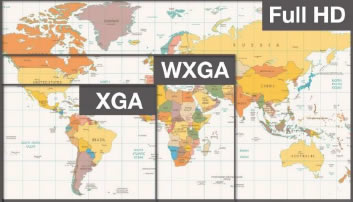
Absolutely! Many church projectors have wireless included, or at the very least can accept 3rd party wireless devices. Wireless can make presenting to your congregation easier and quicker and may even save you some installation costs. There are some limitations and restrictions with wireless projection over traditional cable projection that you need to be aware of though.
Miracast Wireless allows wireless display of content from compatible Windows and Android devices. This is included on some projectors and commonly included on many third-party wireless dongles. Many third-party wireless devices, such as those from Screenbeam, are compatible with Windows, Android, and Apple devices, utilising both Miracast and AirPlay communication methods. A third-party device like this is a better option should you wish to use a range of devices or any Apple device.
As mentioned above wireless does have some limitations over a cable connection. Overall image quality will be less, you can also expect a significant drop in framerate so video projection may not appear smooth. Wireless screen-mirroring via these methods cannot cast copyrighted material either, this means some apps (such as Netflix) cannot be displayed wirelessly. Wireless screen mirroring is ideal for static display of PowerPoint’s, PDF files, and pictures.
If you wish to ceiling mount your projector the Throw Ratio of the projector can be important. This advertised Throw Ratio figure allows you to calculate what image sizes can be achieved from the projector and/or how far back the projector must be placed. Our Throw Distance Blog explains how to calculate throw distance using the Throw Ratio, but Just Projectors also includes a ‘Throw Distance Chart’ on each projector page to make it easier to compare. Our team are always here to assist with advice when required too.
Many budget church projectors will have a limited zoom range and/or throw ratio, this means they are more restrictive with where they can be placed. Most large-venue projectors will feature a wider zoom range and therefore much more flexibility. There are also more unique short-throw style projectors that will need to be placed very close to the image.
As a very rough guide, for a 100" (2.2m wide) image, a budget projector may need to be placed approximately 3.1 - 3.5m back, a short throw model likely close to 1.1m back, and a large-venue projector would be closer to 4m back. The exact distance will vary depending on the exact projector model selected. Please refer to the Throw Distance Chart shown on each of the projector pages on our website or contact our team for assistance.

The team at Just Projectors are constantly testing new releases to determine the best projectors for Church and House of Worship use. Below we list a range of models we recommend you consider. As always if you have any queries feel free to get in contact with us.
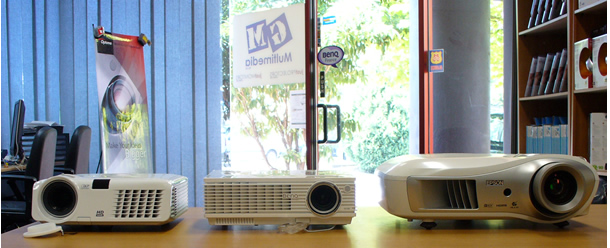
SMALL-MEDIUM CHURCH PROJECTOR RECOMMENDATIONS
Optoma W400LVe
WXGA/HD
Multipurpose Projector

- 4000 ANSI Lumens
- 25,000:1 Contrast
- 10W Inbuilt Speaker
Epson EB-W55
WXGA/HD
Multipurpose Projector

- WXGA HD
- 4000 Lumens
- 16,000:1 Contrast
BenQ MH560
1080p Full HD
Data Projector

- 3800 ANSI Lumens
- Auto Keystone
- USB Power Port
- 2X HDMI Inputs
NEC P474WG
WXGA/HD
Data Projector
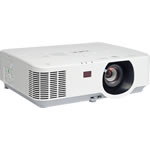
- 4700 ANSI Lumens
- Lens Shift
- 1.6X Optical Zoom
- Powerful 20W Speaker
ViewSonic LS630HD
1080p Full HD Laser
Data Projector
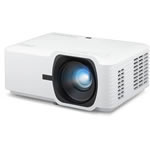
- 4000 ANSI Lumens
- Dust Resistant
- Laser Life up to 30k Hrs
ViewSonic LS740HD
1080p Full HD Laser
Data Projector

- 5000 ANSI Lumens
- Dust Resistant
- Laser Life up to 30k Hrs
SHORT-THROW CHURCH PROJECTOR RECOMMENDATIONS
Optoma GT1080HDR
1080p Full HD
S/Throw Home Projector

- 3800 ANSI Lumens
- REC709 Colour
- Short Throw
Optoma GT2160HDR
2160p 4K
S/Throw Home Projector
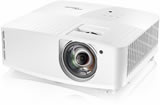
- 4000 ANSI Lumens
- REC709 Colour
- Short Throw
Viewsonic LSD400HD
1080p Full HD Laser
S/Throw Data Projector
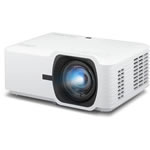
- 4000 ANSI Lumens
- Short Throw
- Laser Life up to 30k Hrs
Optoma AZH430UST
1080p Full HD Laser
UST Data Projector

- 4000 ANSI Lumens
- Ultra Short Throw
- Laser Life up to 30k Hrs
Viewsonic LS832WU
WUXGA Full HD Laser
UST Data Projector

- 5000 ANSI Lumens
- Ultra Short Throw
- Long 3yr Warranty
- Laser Life up to 30k Hrs
LARGE CHURCH PROJECTOR RECOMMENDATIONS
Epson EB-2250U
WUXGA Full HD
Data Projector

- 5000 ANSI Lumens
- 1.6x Big Zoom
Epson EB-2265U
WUXGA Full HD
Data Projector

- 5500 ANSI Lumens
- 1.6x Big Zoom
- Miracast Wireless
- HDBaseT Connection
Optoma ZH507
1080p Full HD Laser
Data Projector

- 5500 ANSI Lumens
- 1.6x Big Zoom
- Laser Life up to 30k Hrs
Sony VPLPHZ51
WUXGA Full HD Laser
Data Projector

- 5300 ANSI Lumens
- 1.6x Big Zoom
- HDBaseT Connection
- Long 5yr Warranty
Sony VPLPHZ61
WUXGA Full HD Laser
Data Projector

- 6400 ANSI Lumens
- 1.6x Big Zoom
- HDBaseT Connection
- Long 5yr Warranty
Epson EB-L730U
WUXGA Full HD Laser
Data Projector

- 7000 ANSI Lumens
- 1.6x Big Zoom
- HDBaseT Connection
- Long 5yr Warranty
- Miracast Wireless
Panasonic PT-VMZ71
WUXGA Full HD Laser
Data Projector

- 7000 ANSI Lumens
- Lens Shift
- Long 5yr Warranty
NEC PV710ULG
WUXGA Full HD Laser
Data Projector

- 7100 ANSI Lumens
- H&V Lens Shift
- Powered Zoom, Focus, Shift
- Long 5yr Warranty
- Optional Lenses
Epson EB-L890e
4Ke Laser
Data Projector
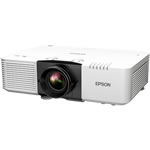
- 8000 ANSI Lumens
- 1.6x Big Zoom
- HDBaseT Connection
- Long 5yr Warranty
- Miracast & Airplay
Panasonic PT-MZ882W
WUXGA Full HD Laser
Data Projector

- 8200 ANSI Lumens
- H&V Lens Shift
- Powered Zoom, Focus, Shift
- Long 5yr Warranty
- Optional Lenses